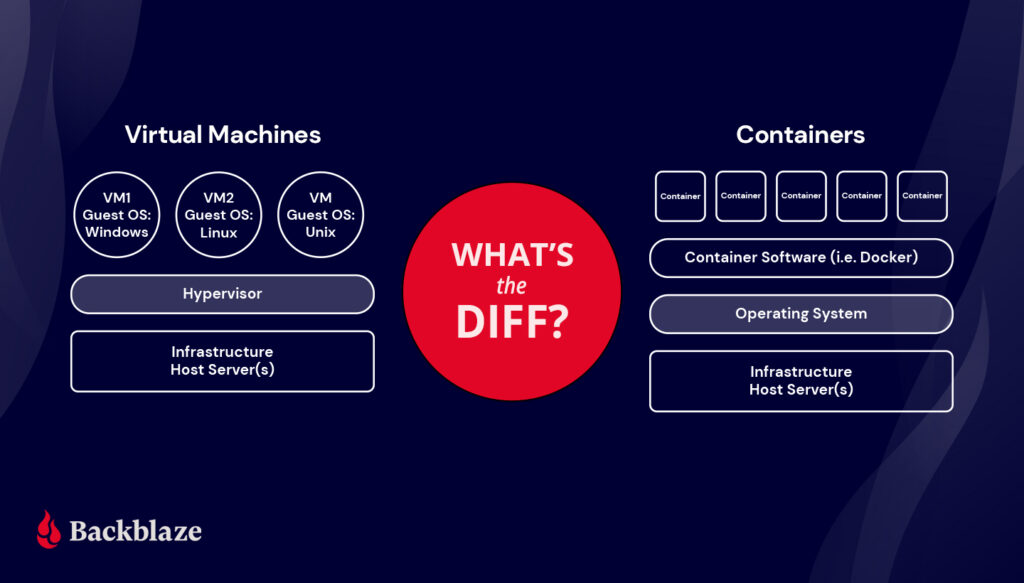
In the realm of modern software development and deployment, two technologies have emerged as fundamental building blocks: containers and virtual machines (VMs). Both play crucial roles in enabling efficient and scalable application deployment, but they differ significantly in their architecture, resource utilization, and deployment characteristics. Understanding the key differences between containers and VMs is essential for making informed decisions about which technology to leverage for specific use cases. In this article, we’ll explore these differences to help you determine the best approach for your application needs.
- Architecture:
- Virtual Machines: VMs emulate physical hardware, including a full operating system (OS), on top of a hypervisor layer. Each VM runs its own OS, which consumes significant resources.
- Containers: Containers virtualize the operating system, allowing multiple isolated user space instances (containers) to run on a single OS kernel. Containers share the host OS kernel, resulting in lightweight and efficient resource utilization.
- Resource Utilization:
- Virtual Machines: VMs are relatively heavyweight compared to containers because each VM requires its own guest OS, which consumes additional memory and storage resources.
- Containers: Containers are lightweight and consume fewer resources compared to VMs since they share the host OS kernel. They boot up quickly and require minimal overhead, making them ideal for microservices architectures and rapid scaling.
- Isolation:
- Virtual Machines: VMs provide strong isolation since each VM runs its own instance of the guest OS. This isolation makes VMs suitable for running applications with different OS requirements or security concerns.
- Containers: Containers offer lightweight isolation, where each container shares the host OS kernel but has its own isolated filesystem, process space, and network stack. While containers provide sufficient isolation for most use cases, they may not be suitable for scenarios with strict security requirements or legacy applications.
- Deployment Flexibility:
- Virtual Machines: VMs provide greater flexibility in terms of OS choice, allowing you to run different operating systems on the same physical hardware. This flexibility makes VMs suitable for environments where diverse OS environments are required.
- Containers: Containers are highly portable and platform-independent. They can run on any system that supports containerization, making them ideal for deploying applications consistently across different environments, from development to production.
- Performance:
- Virtual Machines: VMs may suffer from performance overhead due to the emulation of hardware and the need to run multiple guest OS instances. However, modern hypervisors and hardware-assisted virtualization technologies have significantly reduced this overhead.
- Containers: Containers offer superior performance compared to VMs due to their lightweight nature and minimal overhead. They have faster startup times and lower resource consumption, making them well-suited for high-density deployments and microservices architectures.
Conclusion: Containers and virtual machines are both valuable technologies for deploying and managing applications, each with its own set of advantages and trade-offs. Virtual machines offer strong isolation and flexibility in terms of OS choice but consume more resources and may suffer from performance overhead. On the other hand, containers provide lightweight and efficient resource utilization, rapid deployment, and platform independence but offer less isolation compared to VMs. Understanding the key differences between containers and VMs is essential for choosing the right technology for your specific use case, whether it’s building scalable microservices architectures, deploying legacy applications, or optimizing resource utilization in cloud environments.